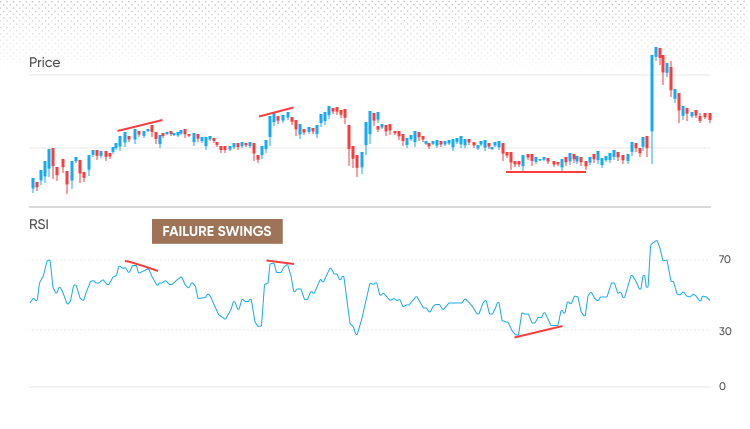How to trade using RSI and other indicators
Traders may choose to use RSI in conjunction with other indicators to enhance their market analysis and gain a more comprehensive understanding of price movements. Below are some of the popular indicators that may complement an RSI trading strategy.
Traders often use moving averages (MA) in conjunction with RSI to identify trends and potential entry or exit points. For example, when the price crosses above a moving average and RSI moves out of oversold territory (above 30), it may signal a potential long entry. Conversely, when the price crosses below the moving average and RSI moves into overbought territory (above 70), it could indicate a short entry point.
By combining Bollinger Bands with RSI, traders could gain additional confirmation of overbought or oversold conditions. When the price touches the upper Bollinger Band and RSI is above 70, it may suggest that the asset is overextended and due for a pullback. Similarly, if the price touches the lower Bollinger Band and RSI is below 30, it might indicate an oversold condition and a potential buying opportunity.
Using Moving Average Convergence Divergence (MACD) together with RSI could provide further confirmation of trend changes and momentum shifts. For instance, if RSI shows a bullish divergence (price makes lower lows while RSI makes higher lows) and MACD experiences a bullish crossover (the MACD line crosses above the signal line), it may reinforce the likelihood of a potential trend reversal to the upside.
The Stochastic Oscillator, like RSI, identifies overbought and oversold conditions. By comparing the two indicators, traders could look for confirmation or divergences to better gauge potential market reversals. For example, if both RSI and Stochastic Oscillator move from oversold to overbought territory, it may strengthen the case for an upward price movement.
Combining Fibonacci retracements with RSI could help traders identify potential support and resistance levels during price corrections. If RSI reaches oversold levels near a significant Fibonacci retracement level, it could signal a higher probability of a price rebound at that level, providing a potential entry point for long positions.
RSI limitations
False signals: The RSI is a leading indicator, designed to potentially get you into a profitable trade earlier than lagging indicators. However, leading indicators are less reliable and can often produce false signals. This is because not every change in momentum means price will change direction.
Size of reversal unknown: The RSI indicator signalled many turning points in the markets over the years, but it does not predict how big or small the following price move will be. The RSI might be signalling a top or bottom or simply a temporary reversal in the direction of a stock’s price.
Conclusion
In conclusion, RSI is a popular technical analysis tool used to measure the strength of price movements for various financial instruments. Developed by J. Welles Wilder Jr., it gauges overbought or oversold conditions and potential trend reversals, providing valuable insights for traders.
The RSI can be applied to different timeframes and time periods, with the standard setting being 14 periods, although traders may customise. For example, RSI settings for daytrading are typically on a shorter lookback, such as 7 or 10 periods, to increase sensitivity to recent price changes.
RSI strategies include identifying overbought/oversold conditions, 50-crossover, divergence, and failure swings. Traders often use RSI in conjunction with other indicators, such as moving averages, Bollinger Bands, MACD, Stochastic Oscillator, and Fibonacci retracements, to enhance market analysis and support decision-making.
However, RSI does have limitations, including the possibility of producing false signals and not predicting the magnitude of price reversals. Despite these drawbacks, RSI remains a useful indicator for traders seeking to navigate the complexities of financial markets.













